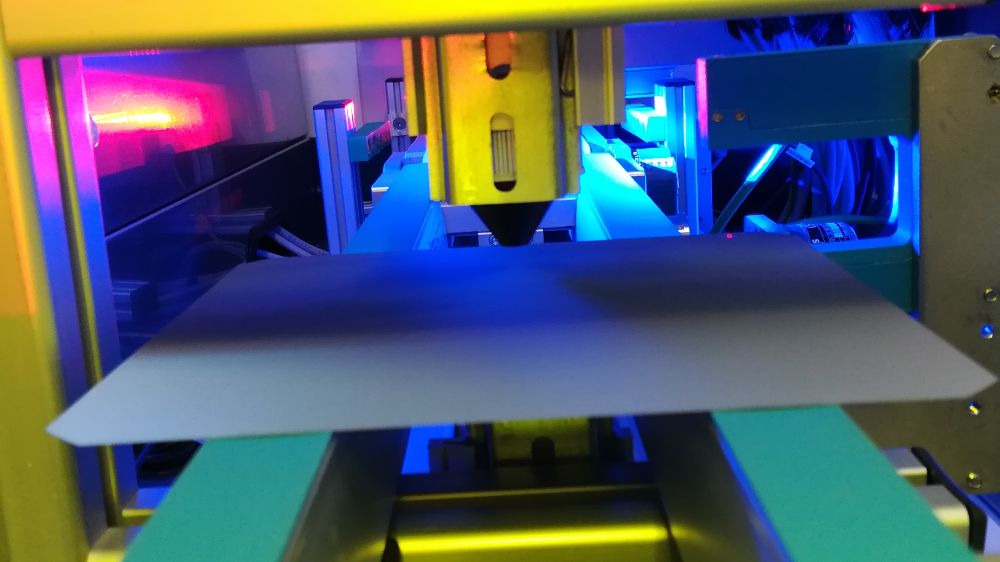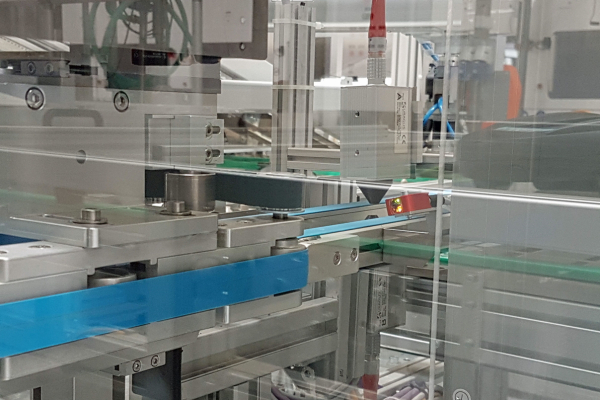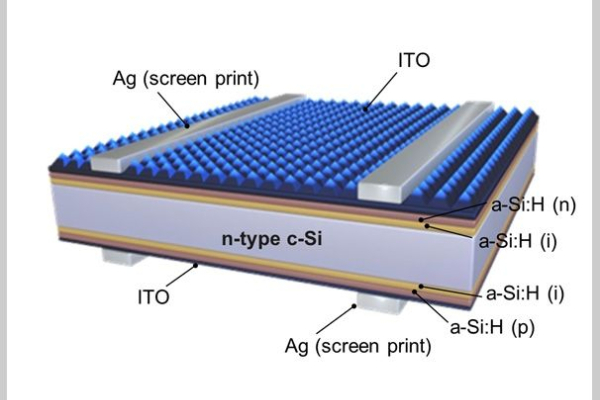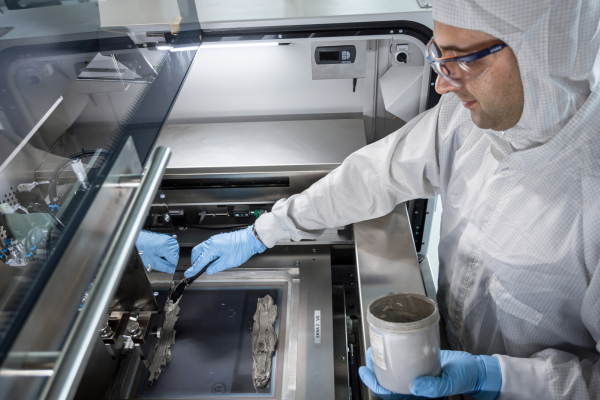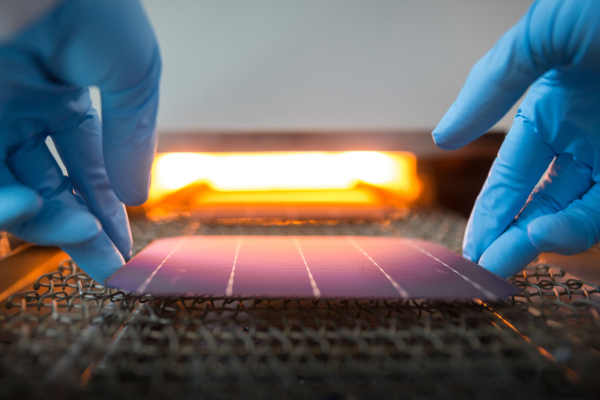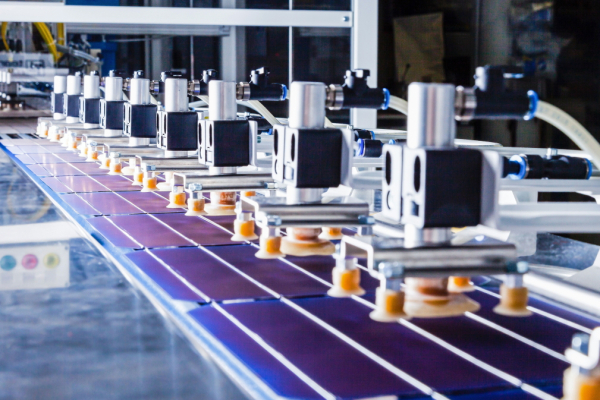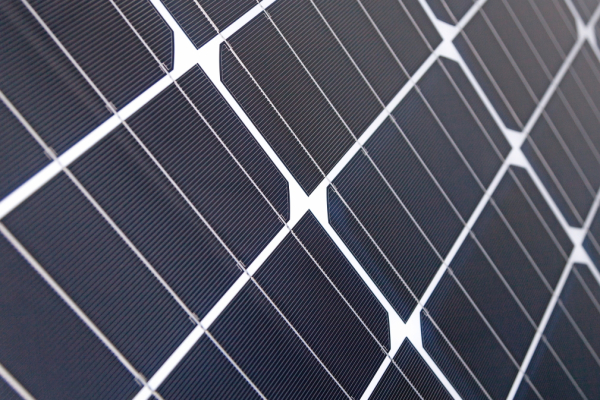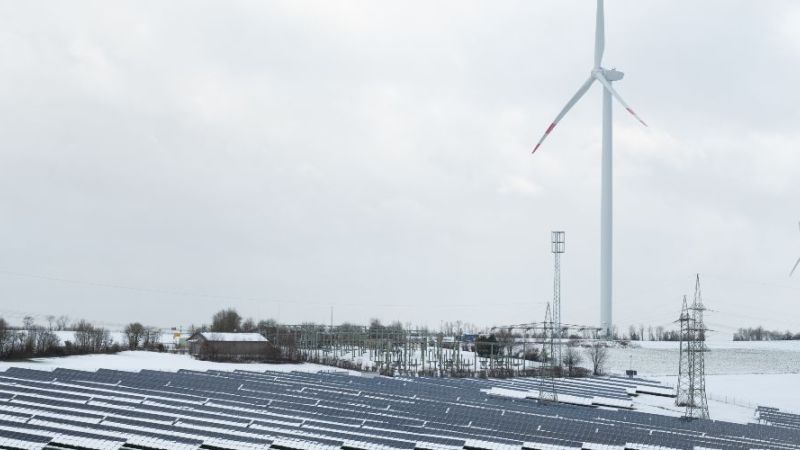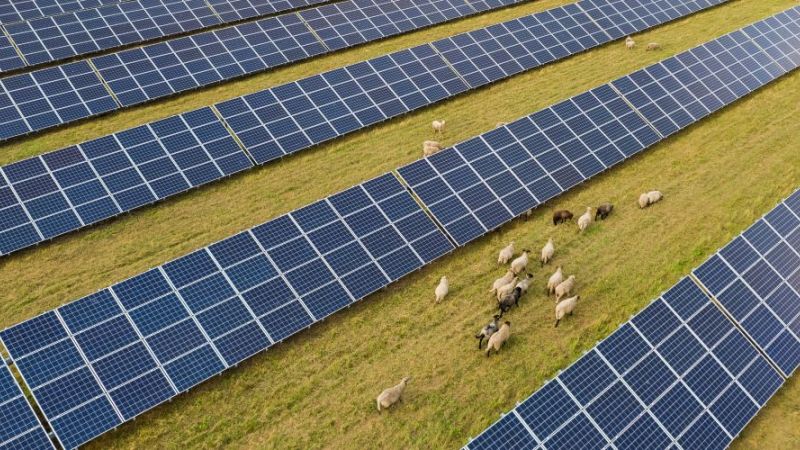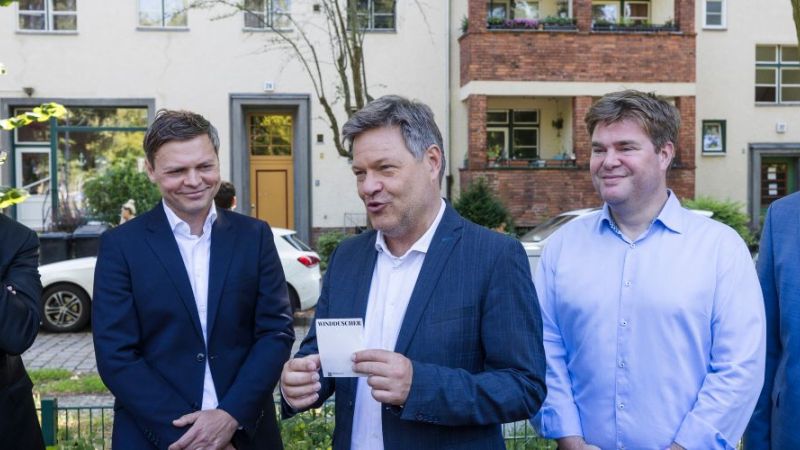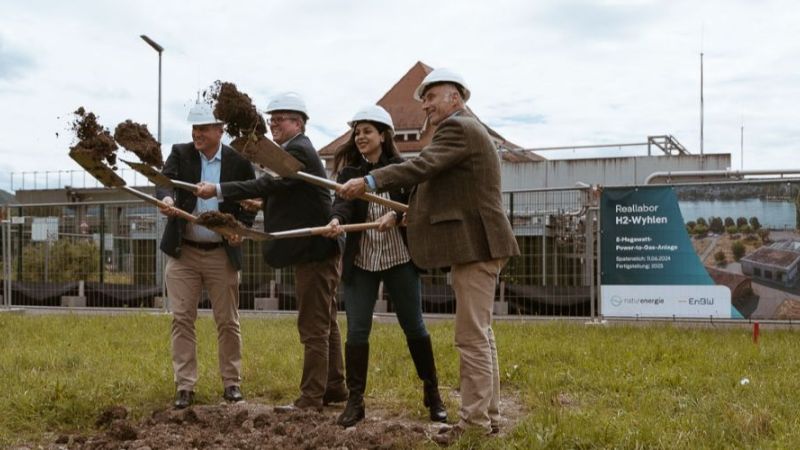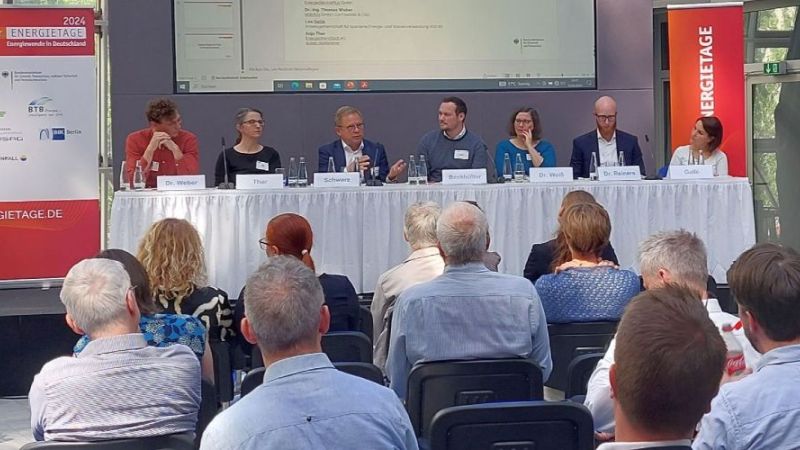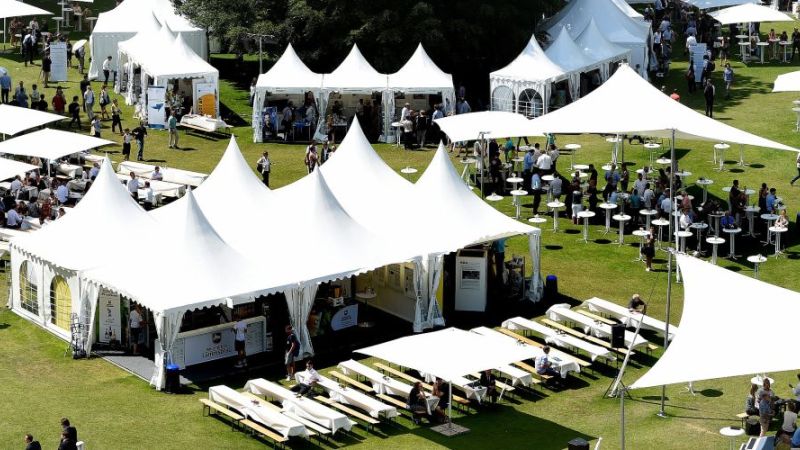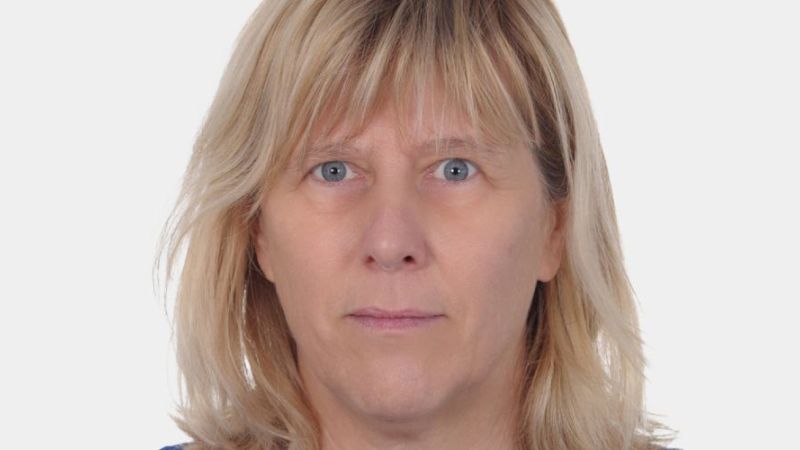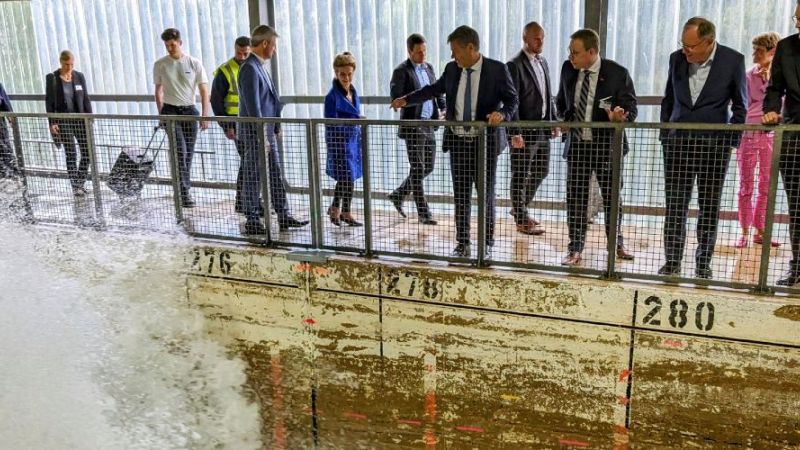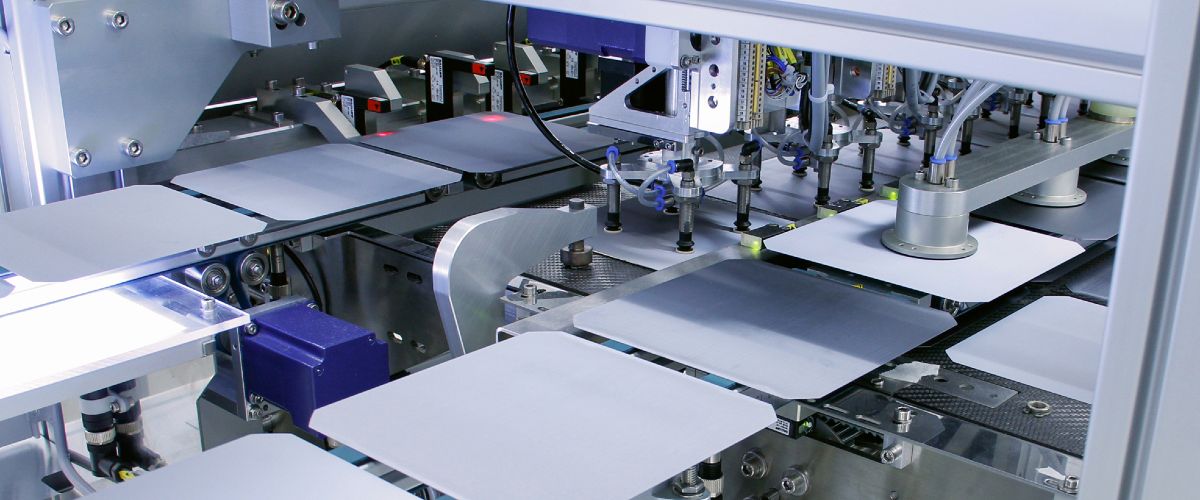 © Jonas und Redmann
© Jonas und Redmann
Photovoltaics
Industry 4.0 for highly efficient heterojunction solar cells
New manufacturing technologies can effectively reduce the cost of electricity production from photovoltaics. This project focuses on heterojunction solar cells and modules and on integrating Industry 4.0 aspects. This requires new measurement technology that monitors production digitally on an ongoing basis. The recorded data are analysed directly and are used for instance to automatically optimise the production processes and to adjust individual process steps promptly.
Exploiting the benefits of heterojunction technology
Heterojunction (HJT) solar cells with comparatively high efficiencies of around 24 per cent and low production costs offer interesting development potential. The heterojunction solar cell combines crystalline photovoltaics with thin-film technology. A very thin monocrystalline silicon wafer is encased by two ultra-thin amorphous silicon layers. This combination results in perfectly passivated contacts, so less generated charge is lost. This cell concept is therefore considered a high-performance cell. Furthermore, the performance loss that occurs at high temperatures is lower than with conventional crystalline solar cells.
The project partners want to use the advantages of heterojunction technology to further reduce electricity generation costs and increase the efficiency of the solar cells. In the research project HJT4.0, short for "Next Generation Manufacturing and Process Technologies for Heterojunction Solar Cells and Modules for Industry 4.0", they are focusing on flexible, efficient and highly automated production processes. They also investigate individual production steps of the solar cells.
Maximum quality – monitoring production plants automatically
Automated process plants are already widely used today. The system continuously collects extensive data from production in order to optimise the plants. However, the quality of the data is sometimes inadequate. Moreover, these data are not recorded sufficiently. This is where the HJT4.0 project comes in. The research focuses on systems that comprehensively monitor production processes. For instance, even the slightest malfunction can have a negative impact on the quality of the wafers. The scientists therefore used a high-resolution high-speed camera to examine and analyse the complete transport cycle of the wafers for the first time. Problems are identified immediately and appropriate measures can be taken. The camera is located in the multi-chamber coating system (PECVD system, short for: plasma-enhanced chemical vapour deposition). The solar cells are produced from raw silicon in this plant in numerous successive steps.
The scientists also evaluated new non-contact inline measurement methods. These are suitable for recording important measurement values during the ongoing process - therefore inline. This means that production is not disrupted and the conventional time-consuming analysis of individual samples by hand is no longer necessary. Errors during production can thereby be detected immediately and appropriate measures can be initiated. The new method has helped to improve the efficiency of solar cells. For example, a 4.0 production plant might be able to digitally record the quality of the input material and adjust the subsequent production steps accordingly.
The developed methods result in large volumes of data, which are processed by specially developed software algorithms. Commercial or specially developed cloud-based software solutions are suitable for automated analysis of process data. For example, the project partners have transferred and automatically analysed the data sets of 60,000 produced solar cells using cloud systems.
New coating systems increase efficiency
The second focal area of the HJT 4.0 project was to optimise the heterojunction solar cells and modules. In the field of semiconductor and contact layers, the scientists have developed a new i-layer, short for intrinsic layer. Intrinsic means inward, containing or inward-looking. This i-layer is an undoped semiconductor, a kind of barrier layer for electrons. The ability to generate free charge carriers in semiconductor materials is only made possible by doping, that is by introducing foreign atoms into the semiconductor. In the end, the multi-i layer is formed from several of these undoped, ultra-thin barrier layers. This allows the open-circuit voltage in the solar cell to be significantly increased and the efficiency to be increased. The open-circuit voltage is the electrical voltage measured on the output side of a voltage source when no load is connected. The higher the voltage, the more current can flow and the efficiency increases. The multi-i layers are applied with an inline PECVD system. By means of a cleverly optimised manufacturing process, the project team has succeeded in producing heterojunction solar cells with an efficiency of 24 per cent.
Finest contact structures under 30 micrometres width
On the front and rear side of the cell, the current is dissipated via metallic electrodes made of precious metals, usually silver. The electrodes form a lattice structure which influences the electrical resistance and the optically active surface of the solar cells. The larger the area shaded by the lattice, the less light can be converted. The contacts should therefore be as narrow as possible, without increasing the electrical resistance. For this reason the project partners have investigated and further developed the screen printing process with which the contacts are printed on the cells. They succeeded in realising very fine contact structures, smaller than 30 micrometres. For comparison: a human hair has a diameter of 60 to 80 micrometres.
Halved solar cells improve module efficiency
Large-area solar cells sometimes produce very high currents of more than 10 amperes, which can lead to greater contact and cable losses. One way to limit the current is to cut the solar cells in half. They are then integrated into the module. The project partners have therefore further developed cell division. A final light treatment of the halved cells can increase the efficiency by 0.2 per cent (absolute). Photovoltaic modules with these solar cells can achieve module efficiencies of over 20 per cent. In contrast, conventional PERC technology modules achieve about 19 per cent. PERC, short for "Passivated Emitter and Rear Cell" is the current standard for crystalline photovoltaic cells.
Long-term stability of photovoltaic modules through soldered connections
The project team further simplified the production of modules by successfully adapting conventional interconnection processes to the requirements of heterojunction solar cells. In experiments, they improved the adhesive strength of the solder connections between the cells and increased it to 1 Newton per millimetre. They then carried out extensive testing of the photovoltaic modules in accordance with the IEC (International Electrotechnical Commission) standard. The knowledge gained will lead to photovoltaic modules with particularly long-term stability, which would not have been possible on the basis of PERC technology.
New technologies ready for industrial production
The automation processes can be integrated into existing coating systems and thus improve the efficiency of solar cells. Inline measurement technology in combination with big data mining enables more efficient manufacturing processes, because production is controlled more effectively. It also allows previously undiscovered potential to be identified. Meyer Burger has already successfully used some of the new inline measurement methods in an industrial research environment.
Furthermore, Meyer Burger is planning new production capacities for photovoltaic solar cells and modules in Germany, which will digitally monitor and automatically optimise production. This simplifies manufacturing processes, reduces maintenance and increases productivity over current systems.

